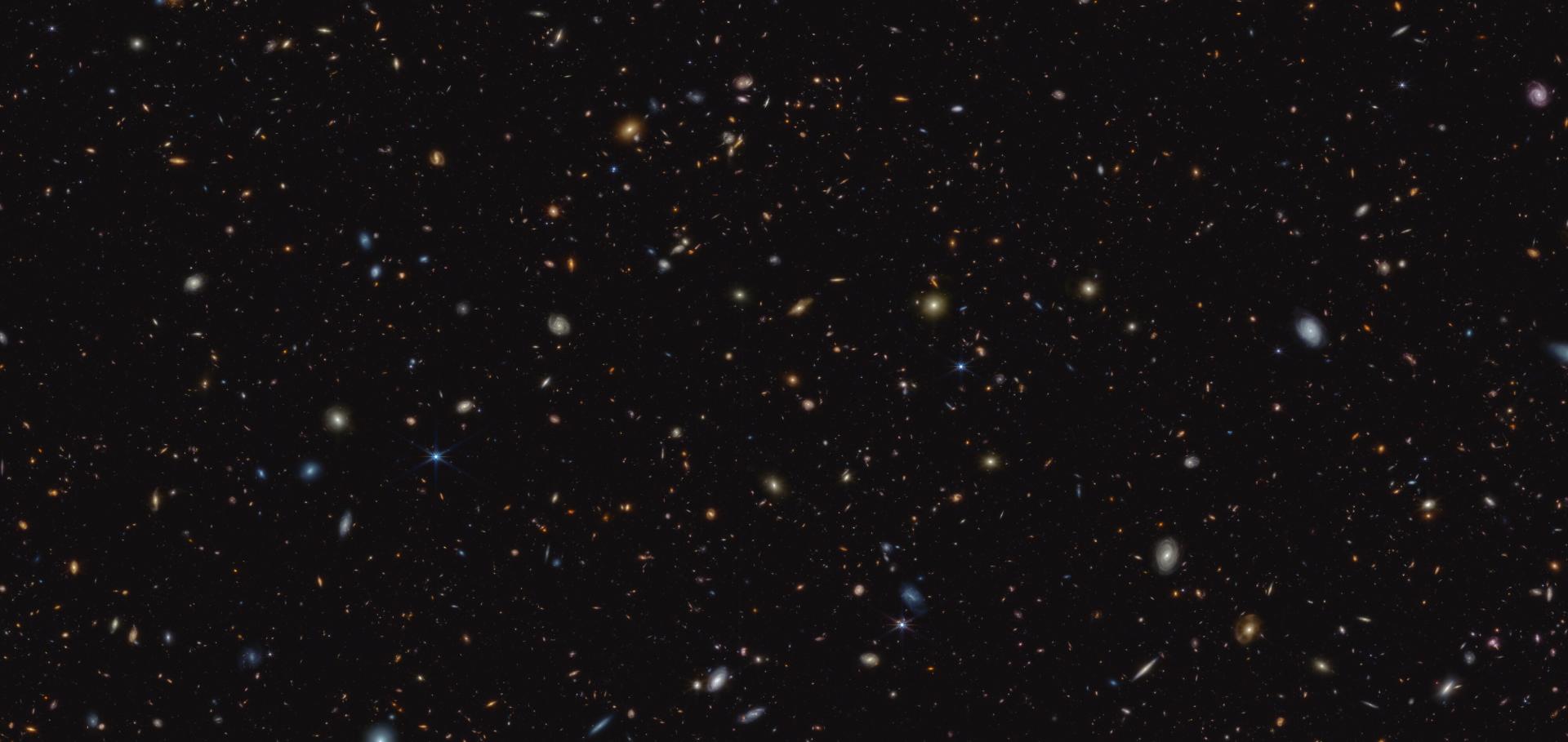Stars and gas in the most metal-poor galaxies I: COS and MUSE observations of SBS 0335-052E
ArXiv 2010.13963 (2020)
Abstract:
Among the nearest most metal-poor starburst-dwarf galaxies known, SBS 0335-052E is the most luminous in integrated nebular He II {\lambda}4686 emission. This makes it a unique target to test spectral synthesis models and spectral interpretation tools of the kind that will be used to interpret future rest-frame UV observations of primeval galaxies. Previous attempts to reproduce its He II {\lambda}4686 emission luminosity found that X-ray sources, shocks, and single Wolf-Rayet stars are not main contributors to the He II-ionizing budget; and that only metal-free single rotating stars or binary stars with a top-heavy IMF and an unphysically-low metallicity can reproduce it. We present new UV (COS) and optical (MUSE) spectra which integrate the light of four super star clusters in SBS 0335-052E. Nebular He II, [C III], C III], C IV, and O III] UV emission lines with equivalent widths between 1.7 and 5 {\AA}, and a C IV {\lambda}{\lambda}1548, 1551 P-Cygni like profile are detected. Recent extremely-metal poor shock + precursor models and binary models fail to reproduce the observed optical emission-line ratios. We use different sets of UV and optical observables to test models of constant star formation with single non-rotating stars which account for very massive stars, as blueshifted O V {\lambda}1371 absorption is present. Simultaneously fitting the fluxes of all high-ionization UV lines requires an unphysically-low metallicity. Fitting the P-Cygni like + nebular components of C IV {\lambda}{\lambda}1548, 1551 does not constrain the stellar metallicity and time since the beginning of star formation. We obtain 12+log(O/H)=7.45\pm0.04 and log(C/O)=-0.45(+0.03)(-0.04) for the galaxy. Model-testing would benefit from higher spatial resolution UV and optical spectroscopy of the galaxy.Early Low-mass Galaxies and Star-cluster Candidates at z ∼ 6–9 Identified by the Gravitational-lensing Technique and Deep Optical/Near-infrared Imaging
The Astrophysical Journal American Astronomical Society 893:1 (2020) 60
Simulating and interpreting deep observations in the Hubble ultra deep field with the JWST/NIRspec low-resolution ‘prism’
Monthly Notices of the Royal Astronomical Society Oxford University Press 483:2 (2018) 2621-2640
Abstract:
The James Webb Space Telescope (JWST) will enable the detection of optical emission lines in galaxies spanning a broad range of luminosities out to redshifts z ≳ 10. Measurements of key galaxy properties, such as star formation rate and metallicity, through these observations will provide unique insight into, e.g. the role of feedback from stars and active galactic nuclei (AGNs) in regulating galaxy evolution, the co-evolution of AGNs and host galaxies, the physical origin of the ‘main sequence’ of star-forming galaxies, and the contribution by star-forming galaxies to cosmic reionization. We present an original framework to simulate and analyse observations performed with the near-infrared spectrograph (NIRSpec) on board JWST. We use the BEAGLE tool (BayEsian Analysis of GaLaxy sEds) to build a semi-empirical catalogue of galaxy spectra based on photometric spectral energy distributions of dropout galaxies in the Hubble Ultra Deep Field (HUDF). We demonstrate that the resulting catalogue of galaxy spectra satisfies different types of observational constraints on high-redshift galaxies, and use it as an input to simulate NIRSpec/prism (R ∼ 100) observations. We show that a single ‘deep’ (∼100 ks) NIRSpec/prism pointing in the HUDF will enable S/N>3 detections of multiple optical emission lines in ∼30 (∼60) galaxies at z ≳ 6 (z∼4-6) down to mF160W≲30 AB mag. Such observations will allow measurements of galaxy star formation rates, ionization parameters, and gas-phase metallicities within factors of 1.5, mass-to-light ratios within a factor of 2, galaxy ages within a factor of 3, and V-band attenuation optical depths with a precision of 0.3.The JWST Extragalactic Mock Catalog: Modeling Galaxy Populations from the UV through the Near-IR over 13 Billion Years of Cosmic History
Astrophysical Journal American Astronimical Society 236:2 (2018) 33
Abstract:
We present an original phenomenological model to describe the evolution of galaxy number counts, morphologies, and spectral energy distributions across a wide range of redshifts ($0.2\lt z\lt 15$) and stellar masses $[\mathrm{log}(M/{M}_{\odot })\geqslant 6]$. Our model follows observed mass and luminosity functions of both star-forming and quiescent galaxies, and reproduces the redshift evolution of colors, sizes, star formation, and chemical properties of the observed galaxy population. Unlike other existing approaches, our model includes a self-consistent treatment of stellar and photoionized gas emission and dust attenuation based on the beagle tool. The mock galaxy catalogs generated with our new model can be used to simulate and optimize extragalactic surveys with future facilities such as the James Webb Space Telescope (JWST), and to enable critical assessments of analysis procedures, interpretation tools, and measurement systematics for both photometric and spectroscopic data. As a first application of this work, we make predictions for the upcoming JWST Advanced Deep Extragalactic Survey (JADES), a joint program of the JWST/NIRCam and NIRSpec Guaranteed Time Observations teams. We show that JADES will detect, with NIRCam imaging, 1000s of galaxies at z gsim 6, and 10s at z gsim 10 at ${m}_{{AB}}\lesssim 30$ (5σ) within the 236 arcmin2 of the survey. The JADES data will enable accurate constraints on the evolution of the UV luminosity function at z > 8, and resolve the current debate about the rate of evolution of galaxies at z gsim 8. Ready-to-use mock catalogs and software to generate new realizations are publicly available as the JAdes extraGalactic Ultradeep Artificial Realizations (JAGUAR) package.Physical properties and H-ionizing-photon production rates of extreme nearby star-forming regions
ArXiv 1709.03503 (2017)


